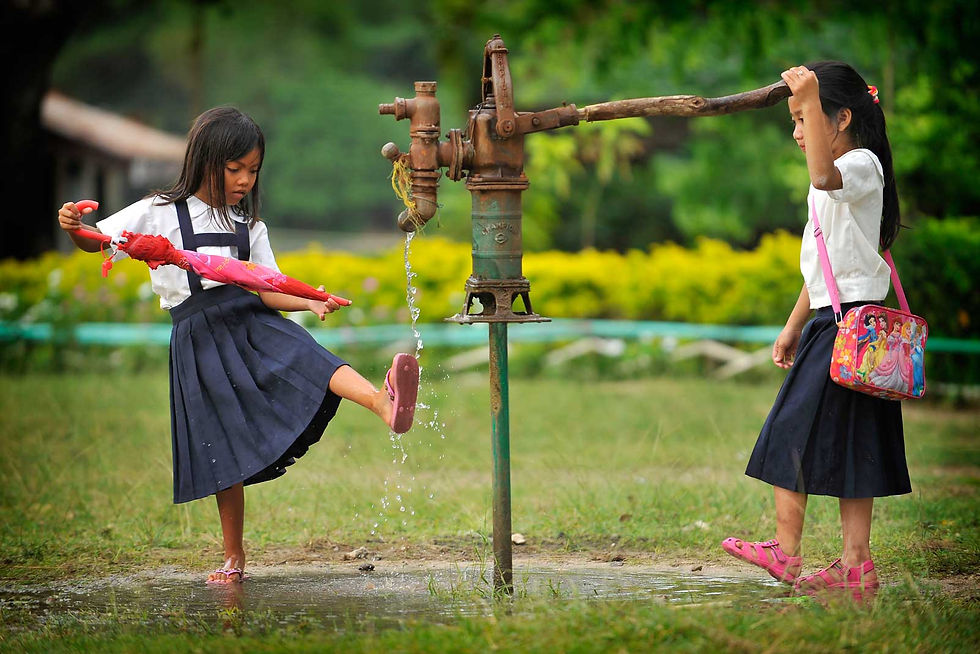- Ziggurat Realestatecorp

- Aug 3
- 3 min read
Some may take the view that, because of our infrastructure deficit, more is always better — that any new road or bridge adds value. But this is far from the truth. Some roads and bridges bring more harm than good.
Urban planner Nathaniel von Einsidel, explains why. Nathaniel is a fellow emeritus of the Philippine Institute of Environmental Planners and principal urban planner of Concep Inc.
Roads are generally correlated with economic development. As an urban planner, I also see roads as physical manifestations of the economic and political decisions that lead to land use change. What bothers me is that while roads are considered part of the required infrastructure for increasing productivity in a city or region, their physical structure is accepted as a benign necessity in the promotion of progress. It especially bothers me that little attention is being given to the unintended consequences of road networks, or how their expansion affects the landscapes that they bisect, because roads and their concomitant traffic introduce pollutants, fragment populations of plants and wildlife, kill animals and cause behavioral changes both in animals and humans.
Roadways have dramatic effects on ecosystem components, processes and structures. The causes of these effects are as much related to engineering as to land use planning and transportation policy. The most significant ecological impacts of roads are habitat fragmentation, altered hydrology, and increased mortality and disturbance for wildlife. Additionally, new roads tend to catalyze changes in the land use of the areas they traverse, which may also bring about negative ecological consequences.
Roads affect the abiotic components of landscapes including its hydrology, the mechanics of sediment and debris transport, water and air chemistry, microclimate and levels of noise, wind and light adjacent to roadsides. Roads can disrupt natural water flow patterns, affecting drainage and filtration. Culverts and other drainage structures can fragment streams and rivers, hindering the movement of aquatic organisms. Roads also tend to increase erosion and sedimentation, impacting water quality and aquatic habitats.
Roads are also agents of change that have both direct and indirect effects on living organisms. Roads affect animal and plant populations directly by entirely obliterating the ecosystems in their path. Road construction directly destroys habitat, and the associated infrastructure like barriers and fences can isolate animal populations. This fragmentation can disrupt gene flow, leading to inbreeding and reduced genetic diversity in isolated animal populations. Roads also create “edge effects” where conditions near the road, such as increased light, temperature and wind, differ from the interior of the habitat.
For some species, particularly small, slow-moving animals that frequently cross roads, it can be fatal. Roadkill is a significant source of mortality for many animal species. Traffic noise and disturbance also deter animals from using habitats near roads, reducing their available space and potentially affecting breeding success.
While roads have many direct ecological effects on adjacent aquatic and terrestrial systems, as network structures, they also have far-reaching, cumulative effects on landscapes. Some major effects to landscapes that directly relate to roads include the loss of habitat through the transformation of existing land cover to roads, and road-induced land use and land cover change, as well as reduced habitat for wildlife.
Furthermore, vehicle emissions release pollutants like heavy metals and hydrocarbons into the environment, contaminating soil, water and air, impacting plant and animal health. Roads can also introduce pollutants into aquatic ecosystems, affecting water quality and aquatic life. Roads also act as corridors for the spread of invasive species, which can outcompete native plants and animals. Roads also alter temperature, humidity and light levels, creating different microclimates compared to surrounding areas. Roadside soils may have altered nutrient content, pH, and water content due to pollution and changes in drainage.
While roads affect both the biotic and the abiotic components of landscapes, they also catalyze changes in land use including human encroachment in ecologically sensitive areas. It is crucial to analyze and predict the potential ecological effects of alternative transport scenarios by applying transport geography theories and road ecology research methods to advance understanding about the dynamics between road systems and landscapes, and thus help lessen the negative ecological effects of roads on the environment.
Source: Manila Times





